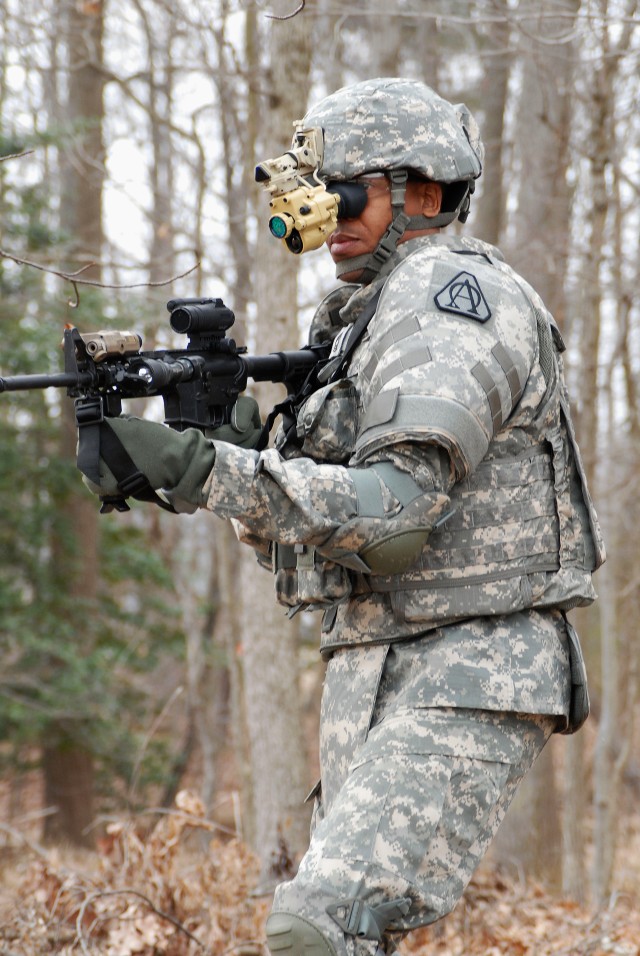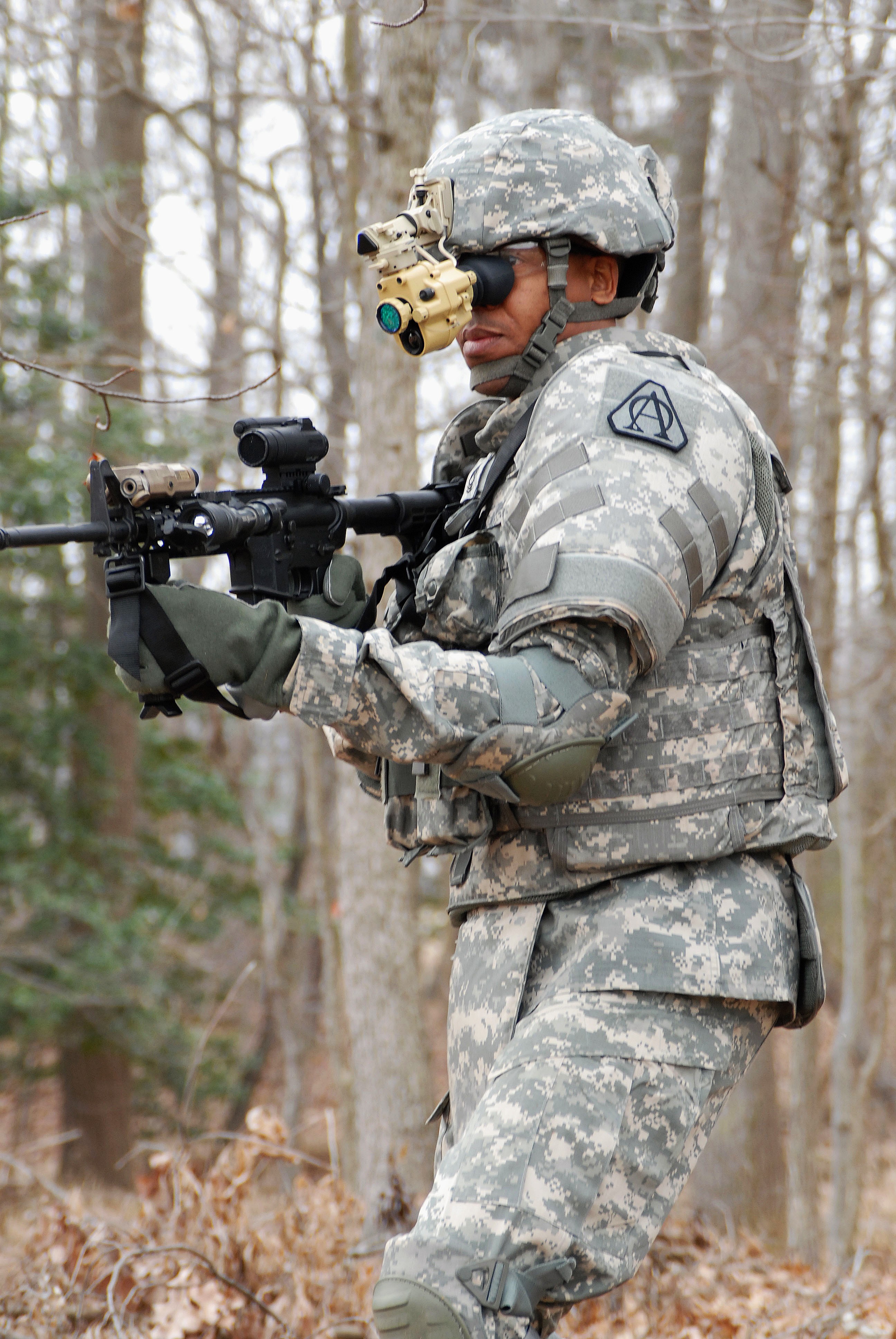FORT BELVOIR, Va. (Army News Service, March 30, 2009) -- Soldiers now have a leap-ahead new tool that will enhance their ability to see in total darkness: the AN/PSQ-20 Enhanced Night Vision Goggle.
The ENVG is being fielded by Program Executive Office Soldier, the Army acquisition agency that develops, acquires, and fields what Soldiers wear and carry. About 300 sets of the new night-vision goggles were fielded to the 10th Mountain Division in February, the first unit other than Special Forces to use the goggles.
The ENVG is a helmet-mounted passive image intensification and thermal device that incorporates both I2 and long-wave infrared sensors into a single integrated system. It weighs two pounds, including the battery pack which uses four AA batteries, the helmet mount, and wiring harness.
"You can really tell where a person is, where a vehicle is, a lot more than with just regular night vision," said Pvt. Andrew Busch of the 10th Mountain Division, whose Soldiers were the first to receive the ENVG. "When I first put mine on, it was clear right away. I didn't have to adjust it at all."
"Our mission at PEO Soldier is to constantly strive to improve upon current capabilities in order to save and improve the quality of Soldiers' lives, while we simultaneously enhance their ability to accomplish their missions," said Brig. Gen. Peter N. Fuller, the program executive officer for soldier equipment. "When it comes to sensor and laser systems, this system achieves those ends."
In 2000, the U.S. Army began development of a fused imaging system. Feasibility studies resulted in a concept to combine a thermal camera with enhanced image intensification into an integrated helmet-borne system, something that would allow Soldiers literally to see through total darkness while still enabling them to see details and to use weapon-mounted aiming lasers.
Though the AN/PVS-14 Monocular Night Vision Device, the predecessor to the ENVG, has been very popular with Soldiers for its smaller size and reduced weight, the Army wanted to augment the AN/PVS-14's capabilities.
"The AN/PVS-14 does a fine job in low light conditions." said Sgt. Maj. Thomas W. Coleman, PEO-Soldier's senior enlisted adviser. "By incorporating a thermal camera, the ENVG increases individual Soldier mobility and situational awareness, day or night, in all weather and degraded battlefield conditions."
The ENVG also facilitates faster threat recognition and thereby reduces the possibility of collateral damage and fratricide, PEO-Soldier officials said.
Several engineering enhancements to the ENVG improved its fit and function - for example, moving the helmet mount's center of gravity closer to the face to increase comfort as well as stability. In addition, the system is now more compact and easier to stow when it is not in use, which enhances Soldiers' maneuverability. Another benefit of the ENVG is its compatibility with aiming lasers currently in use, allowing for a fully integrated system of thermal, laser, and image intensification.
Soldiers' feedback on the ENVG has been overwhelmingly positive. Cpl. Anthony Peden, noting the U.S. Army's longstanding advantage in fighting at night, said, "Now, with the infrared technology and the night-vision capability all wrapped into one, we're 20 steps ahead."
"I think the Enhanced Night Vision Goggle is an outstanding piece of equipment," said Lt. Col. Robert Freyland of the 10th Mountain. "It looks like something out of the movie 'Predator.' "
A digital update for the ENVG is currently in development to take advantage of image processing techniques that can improve image clarity and situational awareness for the Soldier. With a digital ENVG system, Soldiers on the battlefield of the future could import and export digital files, PEO-Soldier officials said.


Social Sharing